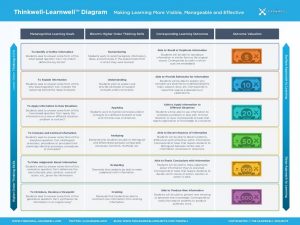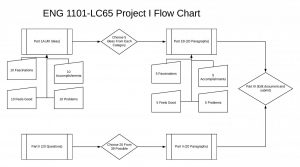One purpose of this course (among many) is to guide you towards being more confident knowledge-creators in your academic work, your developing professional careers, and in your own lives. Click below to see how one company compares different types of thinking and learning. What do you think?

Thinkwell Learnwell Diagram
Of course, this is only one way of approaching thinking and learning. The cognitive realities of how thinking and learning occurs do not change, but we can apply them many different ways and in different contexts. In his TED Talk, How Thinking Works, Dr. Cabrera argues that DSRP thinking is how student can eventually learn to solve complex problems. Here are some of his ideas:
- “Smart” students are good at structured, rule-bound assignments, but not at unstructured problem solving. I would argue that the same is true for “good” students.
- Doing good at school is not the same as doing good at life.
- Ability to think is not the same as intelligence–it is learning and applying particular processes to develop and test knowledge.
- Students’ inability to think in complex ways on unstructured issues is an educational problem with global effects.
- The Bandwidth Solution – increase size of the content pipe of facts, figures, and formulas directed at students – doesn’t work.
- Thinking needs to be taught and students need to develop a complex ecology of practices, tools, perspectives, and experiences to house that thinking.
- DSRP Thinking
- Distinctions – between things – define terms with increasing nuance.
- Systems – every part is a whole and every whole a part
- Relationships – recognize these things
- Perspectives – complex and multiple
- We need to be training people who can be “slumpers” – both splitters and lumpers





